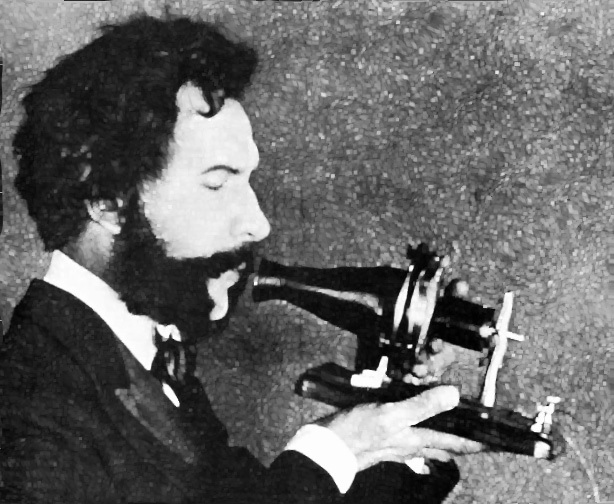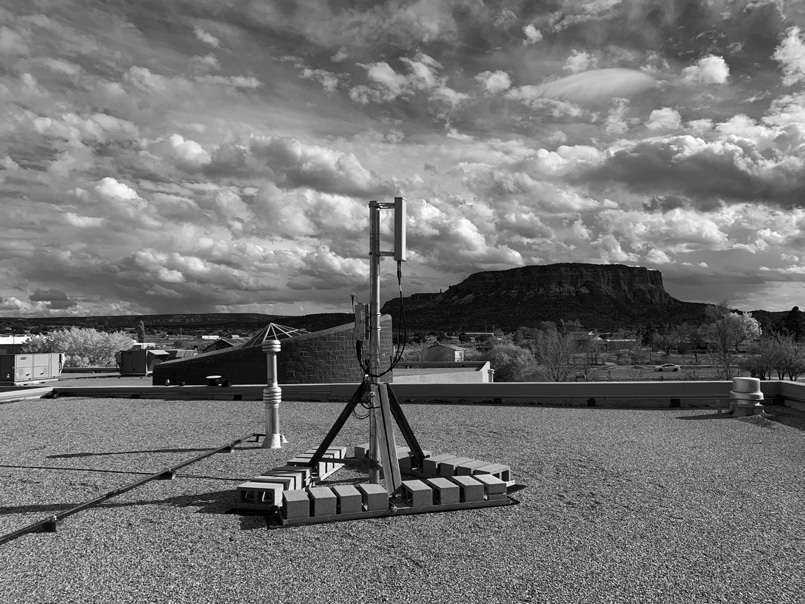Telecom Informer
by The Prophet
Hello, and greetings from the Central Office!
I just finished a busy weekend with a lot of terrible driving. Snow came early this year to the Pacific Northwest. This time of year, when Mother Nature unloads, access can be cut off except through the Columbia River Gorge when Snoqualmie and Stevens Pass are snowed in. Naturally, on the day I needed to travel, both passes were... impassable.
I had to drive the long way around, starting at six in the morning. South to Oregon, east through windy Hood River, and finally north again into Washington State to one of the most remote pieces of tribal land in the country. It was the weekend, I was working, and I needed more coffee. But what I did today was important enough to volunteer to do it. That's right: today, I'm not getting paid!
East of the mountains, the terrain is high desert.
It's the Old West here, with sagebrush, tumbleweeds, and bitter winter cold. The distances are vast and the population is sparse. This is the kind of place that my employer never wanted any part of. Once GTE country, it was briefly acquired by an East Coast Incumbent Local Exchange Carrier (ILEC).
In a series of transactions, the territory was then sold cheaply, multiple times in rapid succession, like an ugly sweater that nobody wanted. From a telecommunications perspective, it's the bottom of the barrel, serviced by a bottom feeding carrier that specializes in rural telecommunications.
And by "specializes," I mean "provides the bare minimum service to continue receiving federal subsidies."
Practically nothing has been upgraded or maintained since GTE serviced the area, and GTE was notorious for poor service. Broadband, for the most part, isn't available outside of town. And what the local provider calls "broadband" is 4 Mbps ADSL.
When you call, you're talking to someone overseas who can't do anything but read you a script and tries to sell you things until you hang up in frustration.
On tribal land, the picture is even more bleak.
Residential broadband? Forget it!
There are entire communities with no access to broadband at all, apart from schools and libraries. The Universal Service Fund has an "e-rate" which provides a federal subsidy for these institutions to obtain broadband connectivity. It's real broadband, it's fast, and it's usually not supplied by the area Incumbent Local Exchange Carrier (ILEC). The problem is, it's only available at schools and libraries. Public safety agencies don't have access, City Hall doesn't have access, and homes don't have access.
Kids who need Internet access to do their homework and compete in a modern digital economy often must travel vast distances - sometimes 20 miles or more - to gain access to the Internet when they're away from school.
Why don't they use wireless Internet?" you might think. Good question.
After all, the FCC reserved 4G spectrum in the 2.5 GHz range for school districts.
Unfortunately, most school districts, not realizing the value of what they had, turned around and leased the spectrum to a major national wireless carrier. Now leased, the national carrier doesn't allow schools to use the spectrum, even if no local service is provided.
And naturally, mobile phone carriers don't actually provide service out here. The PCS and 4G spectrum licenses under which mobile phone carriers operate 3G and LTE data services do require license holders to provide service, but they're only required to provide service in the most populated areas.
There is no geographic coverage requirement (unlike the old cellular licenses, which operated on a "use it or lose it" principle).
Fortunately, the tribe we're working with retained their 4G spectrum, so I get to build a cell tower!
We'll be building them a 4G LTE network, which will provide fixed wireless Internet access to a total of 30 homes on the reservation.
Using ordinary wireless routers, the connections can be shared with neighbors, so we expect that in practice over 50 homes will be covered.
I'll be meeting another telecommunications engineer, the local fire chief, some folks from the tribal IT department, a carpenter, and a whole high school IT networking class.
This is a community that is highly motivated to bridge the digital divide, and they're excited to step up.
If I were working with a typical wireless carrier in a typical area, there would be endless fussing about the equipment to be used, where we'd be deploying it, and the geography it would cover. There would be endless site surveys and permit applications, and the build-out would take a few months from beginning to end.
My friends at MuralNet were first contacted by this community three weeks ago. They agreed to help, contacted me through a friend of a friend, and today, we're on the way to do the build.
First, MuralNet ordered all of the parts and had them delivered to me. This definitely isn't the carrier-grade stuff I deploy at the Central Office: it's made by companies like Jetway Computer, Baicells, and KP Performance Antennas.
The entirety of what we're using costs about $10,000 because MuralNet got a Black Friday special on some of the equipment. Some items were purchased on eBay, some through a Chinese website called Alibaba.com, and a lot of it from Amazon.
Most of the three-week interval was spent waiting for sketchy-looking boxes to show up from China. The only pieces of equipment that arrived from a respectable, traditional telecom vendor were the lightning and surge protectors, which came from Graybar.
Once the base station, SIM cards, and Customer-Premises Equipment (CPE) arrived, I pre-provisioned the SIM cards and base stations to save time on site.
Permits weren't required: a highly-motivated community has a way of making red tape disappear.
Site surveys weren't required either, because there was really only one choice of site. We're building the tower on the roof of the middle/high school, because the school is situated on top of a hill overlooking the settlement and it has the fastest Internet connection in town.
The speed clocks in at a blazing 100 Mbps. This is just fine, because the base station can't go faster than 110 Mbps anyway. A broom closet will house the Internet gateway computer; we're kicking out the broom.
We were initially planning to put the gear into the existing IT network room, but decided against it because it's also used as a classroom and students often disconnect things accidentally. Instead, the high school networking class ran Cat 5 cable from their existing core network switch (which isn't accessible to students without direct supervision) to the broom closet.
There is a 120 volt, 15 amp circuit in the closet, but that's all that we really need. It will power a network switch, the base station (which pulls less power than a 100 watt light bulb), and a low-powered (Intel Atom) PC.
There are some tweaks we could do to the antenna positioning once it was up, but once we picked a spot, we knew we'd be committed.
Fortunately, we had a ton of help!
One group of high school kids scattered throughout the reservation with FRS radios and, by talking with them, we were able to find the spot on the roof with the strongest signal. With a little trial-and-error, we put up the antenna. The IT crew in the broom closet already had the PC racked, stacked, powered, surge protected, and networked.
The school's maintenance technician drilled a hole in the roof and pulled power from the circuit in the broom closet below. We ran the rest of the cables, and in 20 minutes flat, we were on the air! Most of the next few hours were spent deploying CPE in the settlement.
This was dead simple because everything had been pre-provisioned. People just needed to find the spot in their house where they had the strongest signal. All 30 CPE connections were online and working within the next three hours. And while the speeds weren't blazingly fast, they were a whole lot faster than ILEC customers up the road in town could get.
Three weeks from inception to deployment.
Half a day on site to bring broadband connectivity to a community that has never had it. That's what happens when volunteers instead of phone companies build a network. But don't tell my boss, because I worked really hard today, and here in the Central Office, it's time to take a nap.
Have a wonderful winter, and I'll see you again in the spring!
References
- Universal Service Schools and Libraries Fund
- MuralNet A non-profit organization bringing connectivity to rural communities.
- Everything You Need to Build Your Own Wireless ISP


